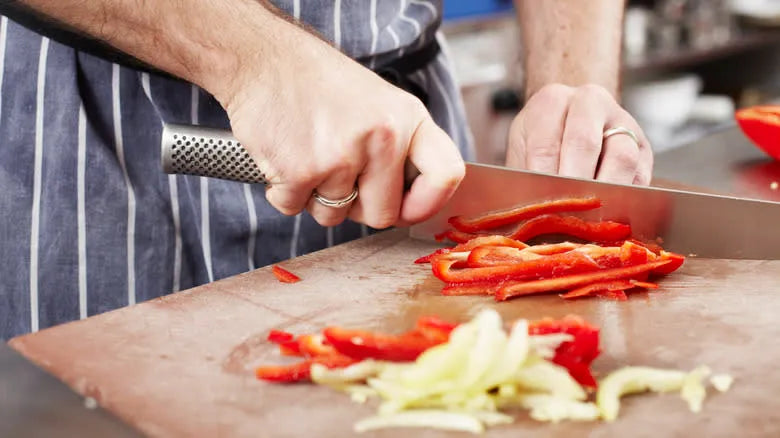
Can I Use a Chef Knife for Everything?
A chef’s knife is valued for its accuracy and versatility. It is sometimes regarded as the fundamental kitchen equipment. If you’re a novice, you might think, ' Can I use a chef knife for everything?’ The answer depends on perfectly balancing this multipurpose kitchen tool, which you can achieve with consistent practice.
A chef’s professional knife is a mainstay for both amateur and professional chefs due to its ergonomic shape, curved edge, and broad blade. Knives Hives explains the pros and cons of a professional cook’s knife so you can answer the question, ‘Can I use a chef knife for everything?’
The Versatility of a Chef Knife
If you spend time in the kitchen, you may need a chef's knife because it is used for various purposes. The following characteristics contribute to its adaptability:
Efficient Slicing and Dicing
The curved shape and sharp edge of a chef's knife make cutting, dicing, and slicing easy. A chef's knife can also easily handle activities such as preparing fruits, vegetables, and meats.
Easy Handling
The ergonomic handle of most chef knives provides a solid grip for precise operation. This lessens the weariness of repetitive operations like cutting herbs or onions.
All-Purpose Cutting
The broad blade of a chef knife may be used for various jobs without requiring frequent tool changes, such as chopping big pieces of meat or mincing garlic.
Rocking Motion for Chopping
The rocking action made possible by the curved edge is ideal for finely cutting herbs like cilantro or parsley. Because of its features, it is one of the most adaptable knives in your collection.
Limitations of Using a Chef Knife for Everything
A chef knife set is a kitchen workhorse. However, it is not made for every job. When used for specific tasks, chef knives may become less effective or cause harm to the knife. This is where a chef's knife is inadequate:
Delicate Tasks
A paring knife provides greater control and accuracy than a chef knife for delicate jobs like peeling fruits or vegetables.
Bread Cutting
A serrated knife is necessary for cutting through pastries or crusty bread. A chef knife has no serrated edge that keeps it from breaking or disintegrating.
Solid Ingredients
Cleaver or specialist heavy-duty knives are better suited for tasks like slicing through frozen goods or bones. A chef knife's blade may become damaged if used for such purposes.
Smaller Details
A smaller, more manageable blade is required for intricate tasks like shaping or carving. A chef knife's bigger size makes it awkward for such precise duties.
When Should You Choose Other Knives?
The chef knife may be used for a variety of activities. However, using it along with other knives increases your kitchen's productivity. Other knives excel in the following situations:
Paring Knife for Precision
The paring knife is perfect for activities requiring accuracy, such as peeling, trimming, and precise cutting.
Serrated Knife for Bread and Tomatoes
Perfect for bread, pastries, and delicate fruit, the serrated edge slices through soft or crusty surfaces without crushing them.
Cleaver for Heavy-Duty Tasks
A cleaver is the best tool for slicing through thick-skinned veggies or breaking down meat.
How to Increase the Lifespan of Your Chef Knife?
Maintaining your chef knife properly is crucial if you use it frequently. Here's how to keep its best health:
Sharpen Regularly
A dull blade decreases productivity and increases the possibility of mishaps. To keep the blade's edge, use a honing rod or sharpening stone.
Hand Wash Only
Keep your chef knife out of the dishwasher. Hand cleaning with mild soap and drying right away maintains its sharpness and avoids corrosion.
Store Safely
Use a blade guard, magnetic strip, or knife block to keep your chef knife. This guarantees kitchen safety and shields the blade from harm.
The Bottom Line
The solution to the question, ‘Can I use a chef knife for everything?’ is to balance it perfectly. Use it where it works best and combine it with other tools for certain chores. This method will keep your kitchen knife set functioning efficiently and improve your cooking experience. Making the most of this kitchen tool while preserving its longevity requires understanding the chef knife's pros and cons.








